Tools you can use.
Report Details

People conduct their lives using a particular "I Opt" strategic profile. This gives rise to predictable behaviors and preferences. Learning strategies that "fit" the way a person conducts their life are more easily absorbed, retained longer and put to use faster. Improving learning outcomes produces real benefits in personal growth, team capacities and organizational depth.
The Learning Report shows how learning can be aligned in a way that "fits" with how a person navigates their life. It is intended to help people to make adjustments that improve the “fit” between learning and living.
The "I Opt" Learning Report uses the "I Opt" 24-question survey as its input document. This is the same survey as used for all other "I Opt" reports. Since they are based on the same technology, these reports will not conflict and can be used in any combination. For example, the Learning Report might be used with the Sales Report in teaching new sales people. One report talks about how to learn sales. The other centers on how to do sales.
How "I Opt" Works

There is no "right" or "wrong" way to process information. They all work. But they are different. Each style uses particular kinds of information, has unique methods of "processing" and produces results with particular characteristics. Every strategy is vital to any complex undertaking. However, they address different aspects of situations and can conflict.
In organization design, complementary skills and capabilities are what counts. "Teamwork" is best approached as a sociological phenomenon. No one has to change to work effectively in a group. People just have to be "plugged in" right so that their unique skills and abilities are meshed with those of others on the team. The "I Opt" individual report shows how to begin to go about doing this.
"I Opt" can also help a person identify preferences in work situations. The insights provided could help identify situations where people can make significant contributions and avoid others that are likely to frustrate them. This information can help navigate opportunities and obstacles that arise in the ordinary conduct of a working life.
This information can improve personal productivity and job satisfaction. At the same time, it increases the value of the individual to the organization of which they are a part. "I Opt" is designed to be an inherently "win-win" tool of Organizational Development and design.
On an individual basis, the report can be useful in counseling a learner. Specific educational directions and strategies for improving outcomes can be discussed in a non-threatening atmosphere. The report is written at an 8th grade level so its contents are accessible to almost anyone.
On a group basis, the reports of multiple learners can be combined to get a quantitative representation of an entire class. This information can be used to design an instructional format that maximizes the learning for the group as a whole.
The learning style report can be used as a stand-alone document in either individual or group settings. It is constructed so as not to offend anyone. Every style has strengths and vulnerabilities. No style is good or bad—just different.
Obtaining a Report
People with an internet account can access the report directly from their Internet. Turnaround time is currently under 5 minutes.
Individual instance users can obtain the report from Professional Communications Inc. (the owner of "I Opt" technology) in any manner preferred by the client (e.g., email, fax, surface mail, private courier, telephone, etc.). Turnaround time is usually less than 24 hours. Contact us for more information.
Report Contents
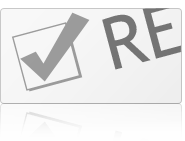
Report Contents
The report identifies the learning style the person prefers and is written at an 8th grade reading level but in a respectful manner. It stresses that this is only one component of learning, but it is an important one. The report contents include:
- Reviews the behavioral characteristics inherent in anyone choosing to use that style. These are framed in terms relevant to learning (e.g., stress, testing, procrastination, etc.)
- Explains what was measured in the survey and how this translates into a particular learning profile the person will employ in acquiring knowledge.
- Reveals the relationship between the learning style and the way the person has chosen to conduct their life. Specific jobs that could be well suited to their particular style choice are identified. The jobs chosen as examples range from high-level professional to semi-skilled. This allows the report to fit with various audiences. It also shows commonality of the human experience across hierarchical levels.
- People using any of the styles can become frustrated. But different things frustrate them. The report identifies those things that are likely to frustrate the style of the subject person. It also describes some of the consequences that might flow from the reaction to frustration.
- The best learning environment for the person is specified. To the degree that they have discretion, the people can use this to construct a favorable setting for themselves.
- Learning typically occurs in groups. The report forecasts the likely learning outcomes if the subject person is paired with people who are using different styles.
- Ways of changing a learning style are briefly examined. However, it is stressed that there is nothing wrong with any particular style. Citing notable people whose behavior suggests they favored the style used by the subject emphasizes this point. In citing these people an attempt has been made to include a diversity of gender, race and area of endeavor (e.g., science, art, business, literature and politics).
- The principal strengths and vulnerabilities of the subjects' style are defined.
- The overall learning profile is outlined. It is pointed out that vulnerabilities can be offset by the person respecting and pairing themselves with others whose style is different from their own.
- If the person has a "split style" an additional page is produced. This occurs in less than 15% of the cases. A split style is not bad but must be managed a bit differently than more traditional frameworks. This page spells out some of the considerations involved.
Roll Over Thumbnails for More Information
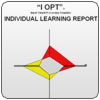
The Individual Learning Report focuses on the information processing elections of a person as they apply to learning situations. The intent is to provide understanding and methods of improving learning performance
The report is generated using the same "I Opt" Survey form that is used by the other “I Opt” reports and analysis. It can be used in conjunction with any of them with complete assurance of compatibility.

The relation of a person’s learning style to the way they conduct their ordinary affairs is identified in plain English.
The report clearly states that "I Opt" strategic styles are not everything. It notes that other things can also be important.
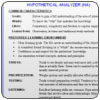
The person’s primary and secondary learning style is identified. The learning related qualities that are typically associated with these styles are identified. This section typically brings a positive response and self-recognition. These pages can be used as a basis of discussion on a group or individual basis.
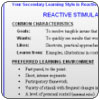 The person’s primary and secondary learning style is identified. The learning related qualities that are typically associated with these styles are identified. This section typically brings a positive response and self-recognition. These pages can be used as a basis of discussion on a group or individual basis.
The person’s primary and secondary learning style is identified. The learning related qualities that are typically associated with these styles are identified. This section typically brings a positive response and self-recognition. These pages can be used as a basis of discussion on a group or individual basis.
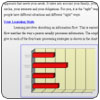
The learning profile is identified. The person's style strengths along each dimension are graphically shown and their relationship is explained.
The report clearly shows that every person has an ability in every direction. No form of learning is barred. However, some are preferred over others.
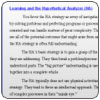
The report outlines the learning environment most favorable for the person. It also identifies the kinds of jobs which favor the individuals particular style. The examples are drawn from all social and educational levels.
The bottom of the page describes the kind situations that can give rise to frustration. The potential consequences of the likely individual's reaction are outlined.
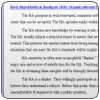
The best learning environment is outlined. People usually recognize that this format would be ideal for them.
Probable relations with people using other learning styles are specified. This helps the individual understand the needs of others better. This is especially useful in team and other group learning situations.
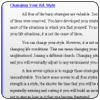
Strategies for changing learning styles are outlined. Notable people who have used this approach are identified. This helps validate that the person's learning approach and strengthens self-image.
The principal strengths and vulnerabilities of the style are cited
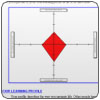
The person's overall learning profile is explained. A graphic profile is provided with instructions on how profiles of different people can be compared.
It is noted that this profile is not better or worse than any other, just different. Understanding this difference is a key to learning in groups.
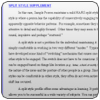
This page only appears if a split-style is present.
If the person uses a split learning style the report generates a special page that outlines how to handle this unique condition.